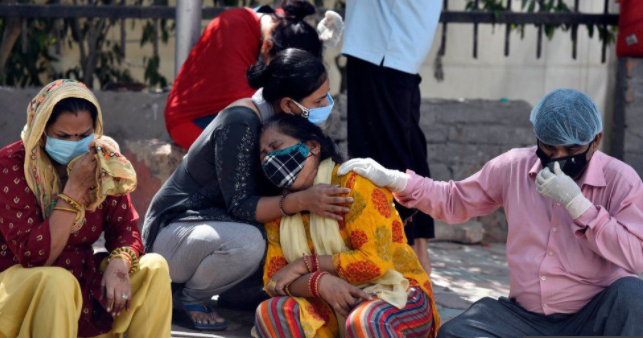The International Monetary Fund released the world economic outlook report at the beginning of this month, raising India’s economic growth forecast to 12.5% this year. Now, the worsening new wave of COVID-19 has cast a shadow over this optimistic outlook.
The number of COVID-19 confirmed cases in a single day in India has reached a new high in recent years. Data released by the Ministry of health on the 25th showed that 349691 new confirmed cases were added compared with the previous day, with more than 300000 new cases added in a single day for four consecutive days.

Analysts believe that the epidemic has become the biggest challenge for India’s sustained economic recovery, and its negative impact is mainly reflected in three aspects.
One is to curb economic activities. According to the minutes of the monetary policy meeting released by the Central Bank of India on the 22nd, many members of the monetary policy committee believe that the epidemic will bring greater uncertainty to the economic recovery. They said that the sustainability of economic recovery depends on the prevention and control of the epidemic, and the current epidemic and various blockade measures will inevitably affect economic activities.
Rao, founder of the Indian Institute of econometrics, believes that whether India strengthens the blockade measures or not, the epidemic will impact consumer confidence, which is crucial to economic recovery, especially the service industry.
Second, increase the imbalance of recovery. Many experts believe that India’s economic recovery is showing the “K” type characteristics, that is, the rapid growth of large companies, the continuous shrinkage of small, medium and micro enterprises, and the increasingly obvious differentiation.
With 110 million employees, India’s small, medium and micro enterprises are the second largest employment sector after agriculture, accounting for 30% of GDP and 40% of exports. The second wave of epidemic is bringing new blockade. The longer the time is, the greater the losses of small, medium and micro enterprises will be.
Kumar Rajagopalan, head of the retail association of India, said that at the beginning of this year, the retail industry in India recovered to 60% to 70% of that before the epidemic, but since then, with the rapid deterioration of the epidemic, the retail industry has fallen sharply.
Duburi Subarao, a former official of the Central Bank of India, pointed out that the recovery imbalance will affect the long-term prospects of India’s economy.
Third, squeeze policy space. India has previously used a large number of fiscal and monetary policy tools to deal with the first wave of epidemic impact, and the current policy space has been stretched.
Since the beginning of this year, the Indian government has issued nearly $162 billion of debt to stimulate the economy, and the central bank has kept the benchmark interest rate at an all-time low, so it can only rely on unconventional policy tools to keep the borrowing cost stable. If more money is needed to cope with the second wave of the epidemic, India may be forced to issue more debt, putting pressure on the stability of bond yields.
In view of the worsening epidemic situation, some institutions in India have lowered their economic growth forecast for this fiscal year. India’s stock market performed the worst in Asia this month, with the rupee devaluing continuously, making it the weakest currency in Asia in the past month, according to the report of Bloomberg News.








